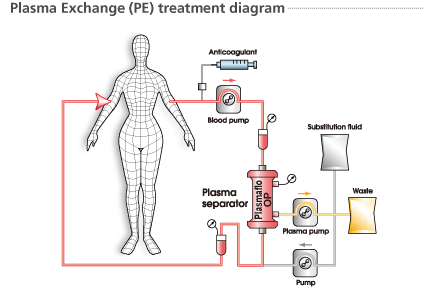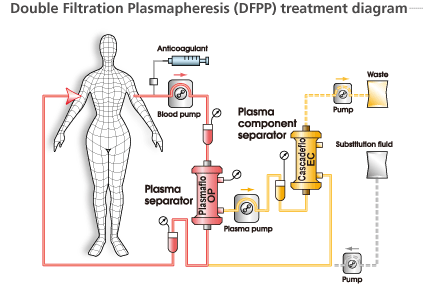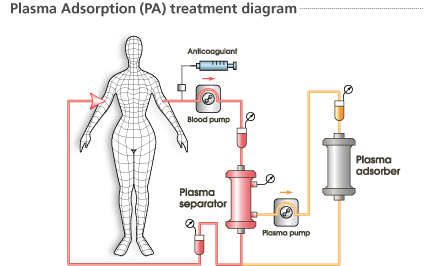A treatment that selectively removes disease-causing substances and replenishes plasma
In its basic form, plasma exchange (PE, also called plasmaphresis) involves the simple removal and replacement of blood plasma. First, plasma is separated from the blood and discarded. Then healthy plasma or substitute fluid is added to the blood to replenish the necessary factors before returning the blood to the body. This therapy is indicated when the liver is not performing its function and multiple substances must be removed from the blood. It is also indicated when there is no other way of removing unwanted substances from the blood.
In PE, plasma separated with a plasma separator is discarded and replaced with the same volume of fresh frozen plasma (FFP) or albumin solution.
* For detailed information about this therapy, please consult your physician.

However, since this method discards everything including substances that are needed by the body, the following two methods have been developed to selectively remove only harmful substances, while leaving necessary substances in the blood.
In DFPP, plasma separated with a plasma separator passes through a plasma component separator which removes harmful substances while leaving valuable proteins such as albumin to be returned to the patient.
* For detailed information about this therapy, please consult your physician.

In PA, plasma separated with a plasma separator flows into a plasma adsorption column which selectively removes harmful substances.

Please feel free to send us any questions you may have about our products and support.


